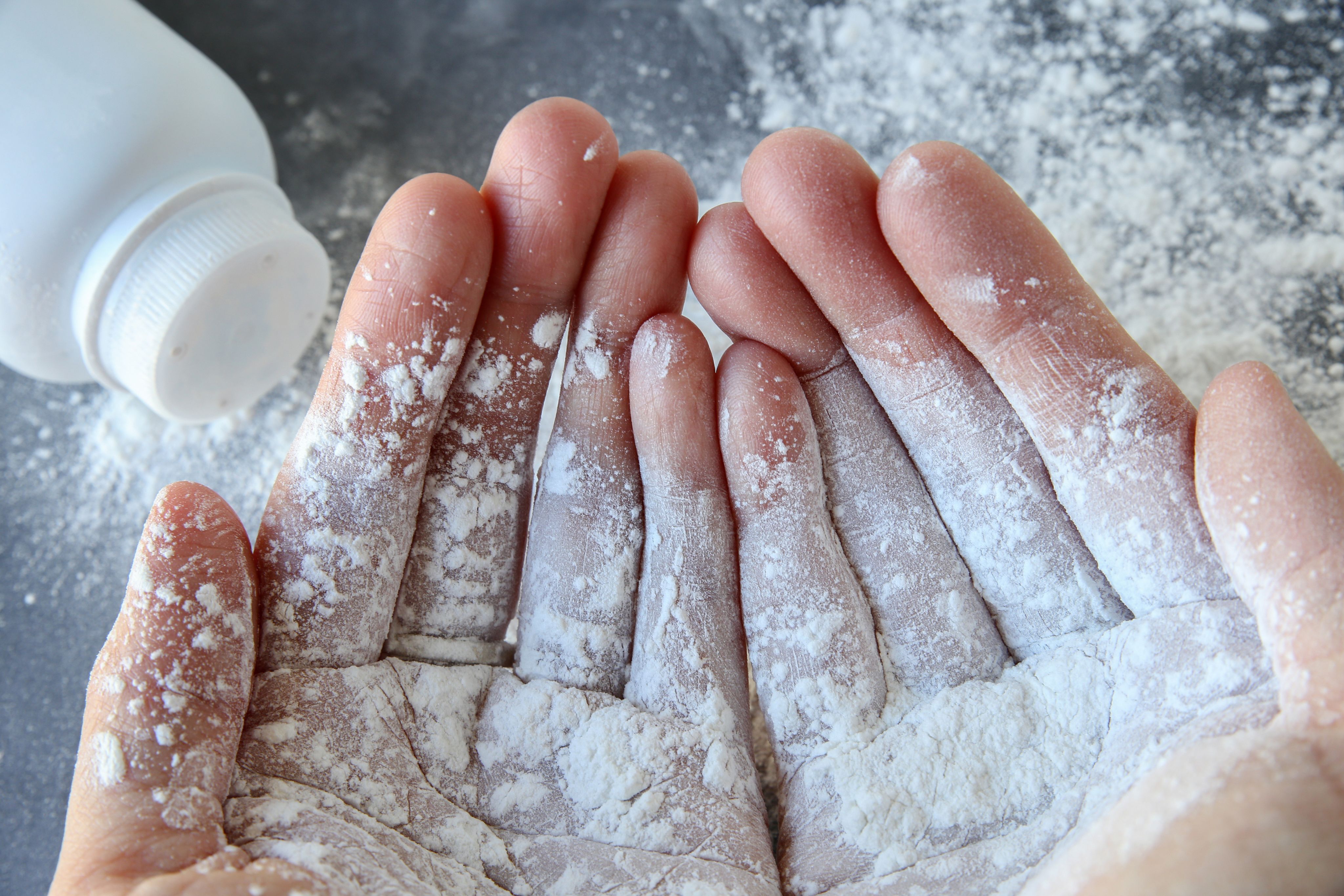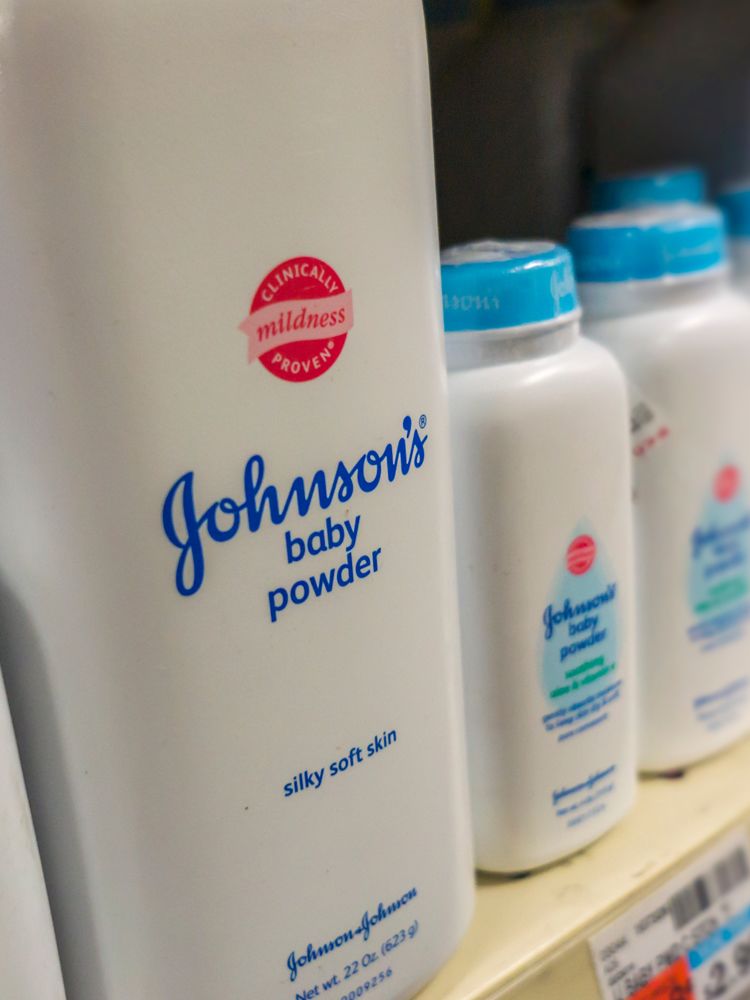Johnson & Johnson discontinue baby powder worldwide:
The dark side of cosmetic talc

Johnson & Johnson have recently come out and announced that their talc-based baby powder will be discontinued worldwide by 2023, with a transition to corn starch products.
For us asbestos lawyers, this is big news. But the announcement to discontinue a world-famous product after years of insisting it is safe raises its own suspicions, and a big question – does their talcum powder contain asbestos? Johnson & Johnson’s answer is vehemently no, but we all know the story: big company seeks to protect its position on the global market and against a massive public backlash. This decision to now stop the sale of their talc-based product comes 2 years after Johnson & Johnson discontinued it in the US and Canada, after being hit by thousands of lawsuits.
The first US lawsuit against Johnson & Johnson was in the 1990s by Darlene Coker, who developed mesothelioma after using the powder on her baby and herself decades before. In that litigation, J&J managed to avoid disclosing talc testing, leading to Ms Coker having to drop the suit, according to an investigation by Reuters in 2018.
Johnson & Johnson’s recent decision to discontinue the product was followed by a statement, which concluded:
“Our position on the safety of our cosmetic talc remains unchanged. We stand firmly behind the decades of independent scientific analysis by medical experts around the world that confirms talc-based JOHNSON’S® Baby Powder is safe, does not contain asbestos, and does not cause cancer.”
With that said, it would be embarrassing to say the least to find out that their talc powder does contain asbestos, right?

“Politically or Scientifically embarrassing”
Unfortunately, Johnson & Johnson has known for decades that asbestos has been present in its talc baby powder. The first inkling that asbestos might be found within the world-famous powder was as far back as the 1970s, when independent testing and research was being done. Johnson & Johnson were quick to try and discredit the scientists’ research and came forward with scientific research which favoured their position.
An internal memo from the company as far back as 1973 states their policy of confronting independent scientific research with their own “has allowed us to neutralize (sic) or hold in check data already generated by investigators who question the safety of talc (and) the principal advantage for this… lies in the fact that we minimise data which may be politically or scientifically embarrassing”.[1]
Soon after, they conducted their own testing and found asbestos in their talc. They didn’t report it to the FDA at the time because (in their words), it was only “trace amounts”.[2]
Sadly, it is not just Johnson & Johnson we are seeing closing ranks. For years, the cosmetic talc industry have been saying there is no asbestos in their talc, but research from different independent laboratories tested 50 samples of a cosmetic talc in 2014, where all 50 of 50 samples tested positive for asbestos fibres[3].

Photo by Yassine Khalfalli on Unsplash
The Texas Two-Step
Johnson & Johnson’s tactics of dodging both allegation and litigation is not new, and recent developments have been no exception to that. They have lost several lawsuits and ordered to pay billions in damages in the US. Following this, in 2022, Johnson & Johnson used a corporate spinoff tactic to escape liability for its talc litigation.
In order to avoid future litigation, Johnson & Johnson has transferred its talc liabilities into a new company registered in Texas, LTL Management, then immediately bankrupted it. The controversial tactic is known as the Texas Two-Step. The repercussions of this means that access to justice is being denied to thousands of people who have been diagnosed with terminal asbestos cancers, who find their ongoing claims permanently on hold.
The morality of the two-step mechanism is questionable at best. But that, according to the Reuters investigation, is nothing new for Johnson & Johnson. They may be removing their talc-based baby powder from the shelves, but the shadow of their talcum powder will darken Johnson & Johnson lawyer’s doors for years to come.
References
[1] Johnson & Johnson company Memo, courtesy of Reuters - https://www.documentcloud.org/documents/5302001-1975-J-J-memo-on-research-philosophy.html#document/p1/a467630
[2] 1976 to 2003 lab reports, courtesy of Reuters - https://www.documentcloud.org/documents/5017565-1972-through-1992-lab-reports.html
[3] Gordon, Fitzgerald and Millette, (2014) Asbestos in commercial talcum powder as a cause of mesothelioma in women. International Journal of Occupational and Environmental Health 20(4), 318–332



